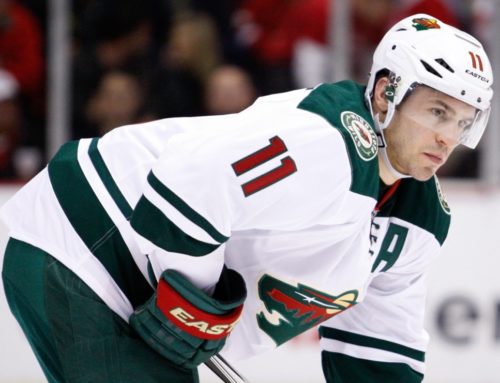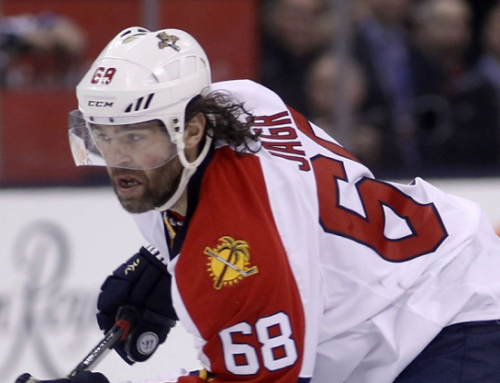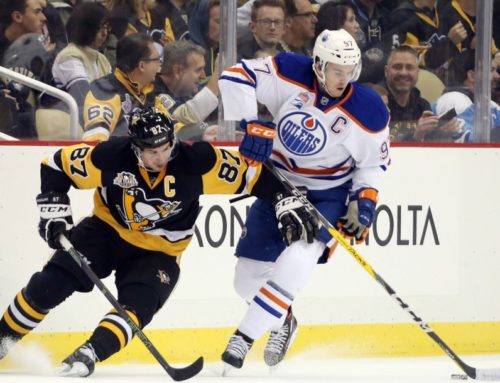
The Contrarian visits Dagobah to tap Yoda for some Fantasy Hockey advice…
Sometimes I feel like Yoda. No I'm not short and green. I'm not dressed in a robe and use a cane. I am not as wise as him nor do I have the Force within me. There are times like today where I feel like him and in particular after reading Ryan Ma's The Power of Numbers articles (part one, part two).
Ryan has put a lot of effort and time writing his two part piece yet there are elements in it where I want to say, as Yoda did to Luke, "you must unlearn what you have learned" or "hear you not what I say?"
From part one, "I still observe plenty of poolies on the forums who go by their 'gut feel' or other random non-data related justifications ('skating mechanics', 'prior draft lineage', 'trust me I watch a lot of their games' or 'they’re my favorite player'), the interesting thing with that is 300 years ago we would have called that witchcraft, in this day and age we anoint it as 'justifiable opinion'. He goes on to add, "but what I want to see is tangible substance-based evidence to justify a point rather than someone who is out there just to make noise."
We have all heard of the saying, usually attributed to Mark Twain, that "there are three kinds of lies: lies, damned lies and statistics". With respect to Ryan's point of view I suggest that his statistics are closer to pulling the wool over your eyes than discovering the miracle formula for hockey pool success.
Three key factors
Time on ice. Ryan states that one of the key statistical indicators for the point production of a player is time on ice. Basically, if a player plays a lot then he will get more points. It intuitively sounds good but maybe that is because the player gets points so his coach plays him a lot or maybe there isn't anyone else to play so that player gets more ice time.
Where the stat fails is in understanding how the player earns more ice time. If we give Wayne Gretzky 25 minutes of ice time each game we would predict that he would get two or three points (heck maybe even 5 points when he was in his prime), but if we give Scott Gomez the same 25 minutes what should we expect from him? In recent years Gomez would be hard-pressed to get even one point.
To this same point, Gretzky playing on his version of the Edmonton Oilers would do very well but if he were on a team like the Calgary Flames this year he would not do as well. The quality of the player's teammates is a factor that is ignored.
Shots on goal. The second factor is the number of shots on goal and while players earn points through assists, the assists don't happen until there is a goal scored. So if a player shoots more they are likely to get more points or as Gretzky says, "you miss one hundred percent of the shots you don't take." So even with an older Gomez if he takes more shots eventually something will happen and he will get more points. The expectation of shooting more means that the player will have to have the puck in reasonable scoring situations more times too. The quality of their opportunity to score is important. Shooting 100 times from the slot is better than 100 times from the opponents blue line, which is better than shooting from the center line.
This also goes back to the quality of their teammates. If they have poor line mates then generating those increased chances is harder to do, especially in the prime scoring areas.
Power-play time on ice (as a percentage of the team's power play time). This is also intuitively obvious. If a player gets more power play time (situations where they have an advantage to score) then they are more likely to get more points. See my comments in the Time on ice segment.
Ryan measures these stats and then finds that the numbers mostly fit into place. There are outliers and in his words, "highly talented rookies who are handcuffed, pass-first players ([Joe Thornton]) and veterans who are being 'managed' (Selanne, [Iginla], and Alfredsson)". There are many more categories though, guys like last year's Mikhail Grabovski who was managed to third or fourth line duty, players who get more ice time because there is no one else around worth to giving it too, players who play against the top lines of other teams and similarly those who play when their team is shorthanded.
Looking at the various graphs, there are a lot of markers that are above and below the line, plus the markers are denser when the point totals are lower. It becomes sparser when the players are supposed to score more. (Suggestion, I would have points always be on the same axis for all the graphs) (Editor’s note: Ryan Ma addressed this point and others in the comments below)
In part two, Ryan writes, "I will be the first to accept the fact that when looking at numbers, you are looking at it from a 'summative' perspective (it's already happened) and that there's absolutely no certainty that the situation will necessarily change for the future." This is supposed to be the Power of Numbers yet it is caveated to shreds and it is because he knows that past performance does not guarantee future results. Please see my past article called "Beene Counters" specifically the section called "The Past and Forecasting the Future" where I talk about the Gambler's Fallacy in particular.
To me it looks like Ryan has now fallen into the Gambler's Fallacy when he states, "What I would argue is that, numbers tend to 'normalize' to some degree, and the ones that I've identified are, in my opinion, due for some form of correction. I won't guarantee 100% correctness, but I'd be pretty happy with three out of every four". This is where we have to make a distinction between statistics and information.
If we are simply saying that a player will normalize to the prediction, because he had too good a start or too terrible a start, then that is not information. That is as much a 'gut feel', or shall I re-term it to 'brain dead thought' that seems logical but is not.
I will highlight two of his predictions, Dustin Brown and Reilly Smith.
With Brown, Ryan feels that he will get a bump in production because of his past career stats. That is fine but it is in every sense a "gut feel" prediction using stats to mask that it is a gut call. What I would rather like to hear is one of two things, either "Dustin Brown has a poor start because he was playing injured but he is now healthy and I expect him to improve in points to be on pace closer to his career averages" or "Dustin Brown has been playing hurt and continues to do so. While it is commendable it is not likely that he will see an increase in his current scoring production. If you want to trade for him, expect better numbers next year, not this year." This is an opinion based on information. (I'm saying that Brown is still hurt and his numbers won't improve).
Reilly Smith is defined as a sell by Ryan. He goes a little bit beyond the stats and argues that the Bruins have enough depth to limit Reilly's opportunity to continue with his first half pace. What I wish to point out in this case is the general assumptions made by Ma, "Smith was largely considered a 'throw in' for the Tyler Seguin/Loui Erkisson deal between the Stars and the Bruins". It is this assumption that really drives Ryan's opinion that Smith's point production will go downward.
The Bleacher Report had an article written about him called "What Is Reilly Smith's Ceiling with the Boston Bruins?" The author, Steve Silverman, gets a quote from Miami (Ohio) assistant coach Nick Petraglia, "Boston knew what they were getting when they included him in the Seguin deal." He also gets a comment from Claude Julien, "He's been a real good player for us. He's a young player that's probably not been overlooked but kind of been in the shadow for a long time and he's emerged with us here."
In an article by DJ Bean, of WEEI 93.7 FM, called "Who is Reilly Smith? Not a throw-in, for one", he asks Boston Bruin GM Peter Chiarelli about Smith being a throw in and his response was "Oh, no. Absolutely not." The article continues to talk about how the Bruins have been keeping an eye on him for many years.
Both articles write about his development and the time it took to make it to the pros and of his start with the Bruins. So if he's earned 34 points in 47 games, which is second best on the team, then why would his production necessarily drop? Eriksson is still dealing with injury issues. Iginla is still being 'managed' by the coach. Lucic and Bergeron are a few points away but even if they surpass Smith's numbers that does not mean that Smith cannot continue his pace, just that the other guys are doing better. Their points don't have to be at Smith's expense.
Chiarelli, however, does say, "Half a season does not a player make". Meaning, he is still a kid and he cannot take everything for granted. He has got to continue to work hard. Which, certainly looks like he is doing.
This is what I mean about the difference between statistics and information.
Normally I'd normalize but today I feel like being different.





 EDM
EDM STL
STL ANA
ANA BUF
BUF DET
DET NYI
NYI CAR
CAR MIN
MIN VAN
VAN PIT
PIT
